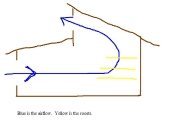

 8
8




Order copies of my book, Dairy Farming: The Beautiful Way at
www.createspace.com
Help spread the word! Thanks!
struggle - hustle - soul - desire
 1
1









Order copies of my book, Dairy Farming: The Beautiful Way at
www.createspace.com
Help spread the word! Thanks!
struggle - hustle - soul - desire





Paul Cereghino- Ecosystem Guild
Maritime Temperate Coniferous Rainforest - Mild Wet Winter, Dry Summer




 how well do they get on and where do the ducks lay ? Roost ?
how well do they get on and where do the ducks lay ? Roost ?
Living in Anjou , France,
For the many not for the few
http://www.permies.com/t/80/31583/projects/Permie-Pennies-France#330873





Paul Cereghino wrote:I like the ideas...
I have never heard of ash for bathing! Diatomaceous earth yes, but not ash, do you just have a box in a dry place? What kind of box?
Paul Cereghino wrote:I have reflexively tried to keep feed out of the litter... do you do any proactive management of parasites?
Order copies of my book, Dairy Farming: The Beautiful Way at
www.createspace.com
Help spread the word! Thanks!
struggle - hustle - soul - desire

 1
1




David Livingston wrote:
I notice from your pics that you seems to have a breed of chicken known as Duckshow well do they get on and where do the ducks lay ? Roost ?
David
Order copies of my book, Dairy Farming: The Beautiful Way at
www.createspace.com
Help spread the word! Thanks!
struggle - hustle - soul - desire




Highland Creamery, micro-dairy & family farm.
https://www.facebook.com/home.php#!/highlandcreamery
 1
1






















Order copies of my book, Dairy Farming: The Beautiful Way at
www.createspace.com
Help spread the word! Thanks!
struggle - hustle - soul - desire




 1
1








April Swift wrote:I also thought about using straw/hay but am worried about pesticides. What are good sources of mulch and bedding for chickens?
I never make the same mistake twice.
I make it 5 or 6 times to make sure.
 1
1









Order copies of my book, Dairy Farming: The Beautiful Way at
www.createspace.com
Help spread the word! Thanks!
struggle - hustle - soul - desire
 1
1








leanna jones wrote:hi, love the design, it's helping me clarify as i want to do something similar
i will use branches in the rafters of a lean-to cow shed, also at about 7ft height. does anyone have tips on how to incorporate hens into this cow shed? floorspace is 32x16ft. roof will slope from 13ft > 7ft. will contain 4 cows with calves at feet. i will start with 10 chickens.
the main issue is that the shed would not be predator-proof. the two predators we have are foxes and stoats. if you know about foxes and stoats please tell me if my ideas are crazy.
i am planning to let the chickens let themselves in and out as they please. i would not be clipping their wings so they can get up and away from foxes. but stoats are more of a threat, as far as i understand. stoats can climb high, and they can stretch themselves and balance well so i can imagine them being able to get up any pegs that are put in to help the chickens get up to their roost. but it must be possible to design something that chickens can jump/flap up which stoats can't? any ideas? the uprights of the shed will be wooden telegraph poles and the sides plywood sheeting (i'm not designing or building it but i get to put my chickens in it). i fear stoats might find this easy to climb. i'd like to try and somehow cover the wood with plastic sheeting or something that stoats can't get a grip on!
i would not be able to have nest boxes on the floor, was planning to have them as high as possible - how high would the chickens accept? i know they have to be lower than the roosts.
also are there any issues i should be aware of in terms of mixing cattle and chickens?





|
Any sufficiently advanced technology will be used as a cat toy. And this tiny ad contains a very small cat:
The new permaculture playing cards kickstarter is now live!
https://www.kickstarter.com/projects/paulwheaton/garden-cards
|







